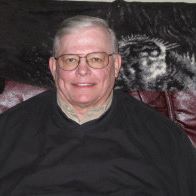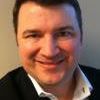Scott T Seaton
age ~67
from Camano Island, WA
- Also known as:
-
- Scott Thomas Seaton
- Scott E Seaton
Scott Seaton Phones & Addresses
- Camano Island, WA
- 11410 83Rd St, Kirkland, WA 98034 • 4258233657
- Lake Stevens, WA
- Bothell, WA
- Phoenix, AZ
- Kiona, WA
- Snohomish, WA
- 11410 83Rd Pl NE, Kirkland, WA 98034 • 4252419532
Work
-
Position:Food Preparation and Serving Related Occupations
Medicine Doctors

Scott M. Seaton
view sourceSpecialties:
Internal Medicine
Work:
Patient First
3370 Pump Rd, Richmond, VA 23233
8043608061 (phone), 8043605494 (fax)
Waynesboro Primary Care
15 Pratts Run STE A01, Waynesboro, VA 22980
5409421200 (phone), 5409420151 (fax)
3370 Pump Rd, Richmond, VA 23233
8043608061 (phone), 8043605494 (fax)
Waynesboro Primary Care
15 Pratts Run STE A01, Waynesboro, VA 22980
5409421200 (phone), 5409420151 (fax)
Education:
Medical School
Johns Hopkins University School of Medicine
Graduated: 1992
Johns Hopkins University School of Medicine
Graduated: 1992
Procedures:
Arthrocentesis
Wound Care
Destruction of Benign/Premalignant Skin Lesions
Electrocardiogram (EKG or ECG)
Pulmonary Function Tests
Skin Tags Removal
Vaccine Administration
Wound Care
Destruction of Benign/Premalignant Skin Lesions
Electrocardiogram (EKG or ECG)
Pulmonary Function Tests
Skin Tags Removal
Vaccine Administration
Conditions:
Acute Sinusitis
Anemia
Anxiety Dissociative and Somatoform Disorders
Bronchial Asthma
Chronic Renal Disease
Anemia
Anxiety Dissociative and Somatoform Disorders
Bronchial Asthma
Chronic Renal Disease
Languages:
English
Spanish
Spanish
Description:
Dr. Seaton graduated from the Johns Hopkins University School of Medicine in 1992. He works in Henrico, VA and 1 other location and specializes in Internal Medicine.
Resumes

Data Center Principle Electrical Engineer
view sourceLocation:
Seattle, WA
Industry:
Computer Software
Work:
Microsoft
Data Center Principle Electrical Engineer
Microsoft Aug 1999 - Nov 2015
Data Center Electrical and Epms Engineering Manager
Intel Corporation 1997 - 1999
Senior Facilities Electrical Engineer
Boeing 1987 - 1997
Lead Facilities Data Center Electrical Engineer
Data Center Principle Electrical Engineer
Microsoft Aug 1999 - Nov 2015
Data Center Electrical and Epms Engineering Manager
Intel Corporation 1997 - 1999
Senior Facilities Electrical Engineer
Boeing 1987 - 1997
Lead Facilities Data Center Electrical Engineer
Education:
Oregon Institute of Technology 1984 - 1987
Skills:
Data Center
Cloud Computing
Electrical Engineering
Project Management
Electricians
Facilities Management
Enterprise Software
Project Planning
Integration
Engineering
Engineering Management
Saas
Enterprise Architecture
Vendor Management
Leadership
Management
Software Development
Program Management
Cross Functional Team Leadership
Process Improvement
Team Leadership
Contract Negotiation
Testing
Contract Management
Strategic Planning
Cloud Computing
Electrical Engineering
Project Management
Electricians
Facilities Management
Enterprise Software
Project Planning
Integration
Engineering
Engineering Management
Saas
Enterprise Architecture
Vendor Management
Leadership
Management
Software Development
Program Management
Cross Functional Team Leadership
Process Improvement
Team Leadership
Contract Negotiation
Testing
Contract Management
Strategic Planning

Scott Seaton
view sourceWork:
Pys Yacht & Ship

Scott Seaton
view source
Scott Seaton
view sourceWork:
North Homes Children & Family Services

Scott Seaton
view source
Scott Seaton
view source
Scott Seaton
view source
Scott Seaton
view sourceUs Patents
-
Modularization Of Data Center Functions
view source -
US Patent:8077457, Dec 13, 2011
-
Filed:Feb 27, 2009
-
Appl. No.:12/395556
-
Inventors:David Thomas Gauthier - Seattle WA, US
Scott Thomas Seaton - Kirkland WA, US
Allan Joseph Wenzel - Seattle WA, US
Cheerei Cheng - Newcastle WA, US
Brian Clark Andersen - Kent WA, US
Daniel Gerard Costello - Redmond WA, US
Christian L. Belady - Mercer Island WA, US
Jens Conrad Housley - Hillsboro OR, US
Brian Jon Mattson - Redmond WA, US
Stephan W. Gilges - Portland OR, US
Kenneth Allen Lundgren - Portland OR, US -
Assignee:Microsoft Corporation - Redmond WA
-
International Classification:H05K 7/20
-
US Classification:361690, 36167953, 361701, 361716, 16510433, 522201, 522203
-
Abstract:In one example, a data center may be built in modular components that may be pre-manufactured and separately deployable. Each modular component may provide functionality such as server capacity, cooling capacity, fire protection, resistance to electrical failure. Some components may be added to the data center by connecting them to the center's utility spine, and others may be added by connecting them to other components. The spine itself may be a modular component, so that spine capacity can be expanded or contracted by adding or removing spine modules. The various components may implement functions that are part of standards for various levels of reliability for data centers. Thus, the reliability level that a data center meets may be increased or decreased to fit the circumstances by adding or removing components.
-
Connection Between Machines And Power Source
view source -
US Patent:20100102633, Apr 29, 2010
-
Filed:Oct 28, 2008
-
Appl. No.:12/259674
-
Inventors:Scott T. Seaton - Kirkland WA, US
-
Assignee:MICROSOFT CORPORATION - Redmond WA
-
International Classification:H02J 9/00
-
US Classification:307 64
-
Abstract:Machines may be connected to power distribution units (PDU/STSs) in such a way that if one PDU/STS fails or is taken out of service, the machines' loads are shifted more-or-less evenly to the other PDU/STSs. Several PDU/STSs may be provided for a group of dual-corded machines. The two cords of each machine are connected to a pair of PDU/STSs. Different pairs of PDU/STSs may be used for different machines. In normal operation, each machine may draw part of its power through each of the two cords. If one PDU/STS to which a machine is connected fails or is taken out of service, the entire load on that machine may be shifted to its remaining cord. Since redistribution may be approximately even across PDU/STSs, tolerance for one PDU/STS failure can be implemented with relatively little over-sizing of the PDU/STSs.
-
High Availability, High Efficiency Data Center Electrical Distribution
view source -
US Patent:20100141039, Jun 10, 2010
-
Filed:Jan 19, 2009
-
Appl. No.:12/355818
-
Inventors:Christian L. Belady - Mercer Island WA, US
Scott Thomas Seaton - Kirkland WA, US
Sean Michael James - Olympia WA, US -
Assignee:Microsoft Corporation - Redmond WA
-
International Classification:H02J 9/00
-
US Classification:307 68, 307 64
-
Abstract:Unlike symmetric power feeds for dual-corded server environments, an asymmetrical power system for high availability environments uses an imbalanced power feed system, allowing lower cost implementation and, in some cases, reduced energy loss in the primary power supply path. One asymmetric power feed uses a direct power feed to supply normal operating power and uses a second system to supply back up power via a switched, conditioned, path with UPS and generator. Because the main power delivery is through the direct line, reliability and power loss are improved.
-
Super Capacitor Supplemented Server Power
view source -
US Patent:20110302432, Dec 8, 2011
-
Filed:Jun 8, 2010
-
Appl. No.:12/796505
-
Inventors:Shaun L. Harris - Sammamish WA, US
Scott Thomas Seaton - Kirkland WA, US
Allan J. Wenzel - Seattle WA, US
Daniel G. Costello - Redmond WA, US
Christian L. Belady - Mercer Island WA, US -
Assignee:MICROSOFT CORPORATION - Redmond WA
-
International Classification:G06F 1/32
H02J 7/00
G06F 11/30
H02J 9/00 -
US Classification:713320, 307 23, 320167, 713340, 714 14
-
Abstract:Super capacitor supplemented server power is described. In embodiments, a power system manager is implemented to monitor the capability of one or more power supplies to provide power for a server system. The power system manager can determine that the capability of the power supplies to provide the power is deficient, and then engage one or more super capacitor power modules to provide supplemental power for the server system to mitigate the power deficiency.
-
Modularization Of Data Center Functions
view source -
US Patent:20120055012, Mar 8, 2012
-
Filed:Nov 9, 2011
-
Appl. No.:13/292215
-
Inventors:David Thomas Gauthier - Seattle WA, US
Scott Thomas Seaton - Kirkland WA, US
Allan Joseph Wenzel - Seattle WA, US
Cheerei Cheng - Newcastle WA, US
Brian Clark Andersen - Kent WA, US
Daniel Gerard Costello - Redmond WA, US
Christian L. Belady - Mercer Island WA, US
Jens Conrad Housley - Hillsboro OR, US
Brian Jon Mattson - Redmond WA, US
Stephan W. Gilges - Portland OR, US
Kenneth Allen Lundgren - Portland OR, US -
Assignee:MICROSOFT CORPORATION - Redmond WA
-
International Classification:H05K 13/00
-
US Classification:295921
-
Abstract:In one example, a data center may be built in modular components that may be pre-manufactured and separately deployable. Each modular component may provide functionality such as server capacity, cooling capacity, fire protection, resistance to electrical failure. Some components may be added to the data center by connecting them to the center's utility spine, and others may be added by connecting them to other components. The spine itself may be a modular component, so that spine capacity can be expanded or contracted by adding or removing spine modules. The various components may implement functions that are part of standards for various levels of reliability for data centers. Thus, the reliability level that a data center meets may be increased or decreased to fit the circumstances by adding or removing components.
-
Data Center Topology With Low Sts Use
view source -
US Patent:20120242151, Sep 27, 2012
-
Filed:Jun 23, 2011
-
Appl. No.:13/167511
-
Inventors:Scott Thomas Seaton - Kirkland WA, US
Allan Joseph Wenzel - Seattle WA, US -
Assignee:MICROSOFT CORPORATION - Redmond WA
-
International Classification:H02J 4/00
H01R 43/00 -
US Classification:307 65, 29825
-
Abstract:Equipment in a data center may be wired in a topology in which each piece of equipment is served by one Static Transfer Switch (STS). Each group of equipment is assigned a main UPS and a reserve UPS, which may be connected to an underlying power source such as a utility. The main UPS and the reserve UPS are connected to the first and second inputs of an STS. For dual-corded equipment, the first cord is served by the output of the STS, while the second cord is served by the main UPS without an intervening STS. Thus, if the main UPS fails, the STS transfers power to the second UPS, thereby allowing the first cord to be powered. The second cord, not being served by the STS, simply loses power, thereby doubling the power draw at the first cord at roughly the same time that the transfer occurs.
-
Power Distribution With Wraparound Bus
view source -
US Patent:20130342012, Dec 26, 2013
-
Filed:Jun 22, 2012
-
Appl. No.:13/530651
-
Inventors:Scott Thomas Seaton - Kirkland WA, US
Allan Joseph Wenzel - Seattle WA, US
Steven Ray Steinert - Monroe WA, US
Courtney Shepherd Jones - Hobart WA, US -
Assignee:Microsoft Corporation - Redmond WA
-
International Classification:H02J 4/00
-
US Classification:307 18
-
Abstract:A power distribution system among a set of units (e.g., server blocks) may comprise, for each unit, a utility line and a unit generator, and a reserve generator providing failover transient performance and redundancy improvement to the power for the unit generators. The reserve generator may connect to the units via a reserve bus, and the unit generators may selectively connect to a wraparound bus connected to the reserve bus. When the failover load exceeds the available failover transient capability of one generator, one or more unit generators may (automatically or by operator selection) be connected with the wraparound bus to apply available transient capability to satisfy the excess failover load with minimal increase in power distribution resources and complexity.
-
Variable Redundancy Data Center Power Topology
view source -
US Patent:20200293101, Sep 17, 2020
-
Filed:Mar 15, 2019
-
Appl. No.:16/355434
-
Inventors:- Redmond WA, US
Lalu Vannankandy KUNNATH - Snoqualmie WA, US
Kristofer Andrew JOHNSON - Snoqualmie WA, US
Mark Joseph BARACANI - Sammamish WA, US
Scott Thomas SEATON - Kirkland WA, US
Osvaldo Patricio MORALES - Normandy Park WA, US
Steven SOLOMON - Kirkland WA, US
David Thomas GAUTHIER - Seattle WA, US -
International Classification:G06F 1/30
G06F 1/26
H02J 9/06 -
Abstract:A first power train that includes a first plurality of components, and a second power train includes a second plurality of components. The first power train is configured to provide power to a first plurality of server racks of a first data center at a first level of high-availability service associated with a first uptime. The first plurality of components includes a first subset of the first plurality of components and a second subset of the first plurality of components. The second power train is configured to provide power to a second plurality of server racks of the first data center at a second level of high-availability service that is associated with a second uptime that is less than the first uptime. The second plurality of components includes a first subset of the second plurality of components and the second subset of the first plurality of components.
License Records
Scott Seaton
Address:
11410 83 Pl NE, Kirkland, WA
License #:
33376 - Expired
Category:
Professional
Issued Date:
Jan 22, 1999
Expiration Date:
Mar 31, 2002
Classmates

Scott Seaton
view sourceSchools:
Morrisville-Eaton High School Morrisville NY 1988-1992
Community:
Gary Wilson, Jack Parsons, Fred Bennett

Scott Seaton
view sourceSchools:
Polytech High School Woodside DE 1991-1995
Community:
Daniel Pye, Foster Trader, Stephanie Cox, Kristen Lambertson

scott Seaton
view sourceSchools:
Maitland Public School Prescott Morocco 1978-1982, Maynard Public School Prescott Morocco 1982-1985
Community:
Rick Maynard, Henk Rietveld

Maynard Public School, Pr...
view sourceGraduates:
Ryan Johnson (1993-1995),
Kristin Schaub (1994-1997),
Scott Seaton (1982-1985),
Lawrence Johnston (1980-1983)
Kristin Schaub (1994-1997),
Scott Seaton (1982-1985),
Lawrence Johnston (1980-1983)

Ygnacio Valley High Schoo...
view sourceGraduates:
Scott Seaton (1971-1975),
Cindy Zipp (1979-1983),
Steve Gonsalves (1975-1979),
Jiovani Angelo (1997-2001),
Darcy Rogstad (1979-1983)
Cindy Zipp (1979-1983),
Steve Gonsalves (1975-1979),
Jiovani Angelo (1997-2001),
Darcy Rogstad (1979-1983)

Dickinson High School, Ch...
view sourceGraduates:
Nick Lindsay (1995-1999),
Scott Seaton (1952-1956),
Robert Anthony (1945-1949),
Danny Willey (1957-1961),
Kenneth Adams (1968-1972)
Scott Seaton (1952-1956),
Robert Anthony (1945-1949),
Danny Willey (1957-1961),
Kenneth Adams (1968-1972)

Corning High School, Corn...
view sourceGraduates:
Scott Seaton (1988-1992),
J Harrington (2000-2004),
Shane McDonough (1970-1974),
David Scott (1976-1980)
J Harrington (2000-2004),
Shane McDonough (1970-1974),
David Scott (1976-1980)
Flickr
Myspace
Googleplus

Scott Seaton
Education:
Université de Montréal - D.M.A., New England Conservatory of Music - M.M., Vanderbilt University - B.M.
About:
Www.scott-seaton.com
Tagline:
North American conductor based in Pittsburgh

Scott Seaton

Scott Seaton

Scott Seaton

Scott Seaton
view source
Scott Seaton
view source
Scott Seaton
view source
Scott Seaton
view source
Scott Seaton
view source
Scott Seaton
view source
Scott Seaton
view source
Scott Seaton
view sourcePlaxo

Scott Seaton
view sourceTripos
Youtube
Get Report for Scott T Seaton from Camano Island, WA, age ~67















